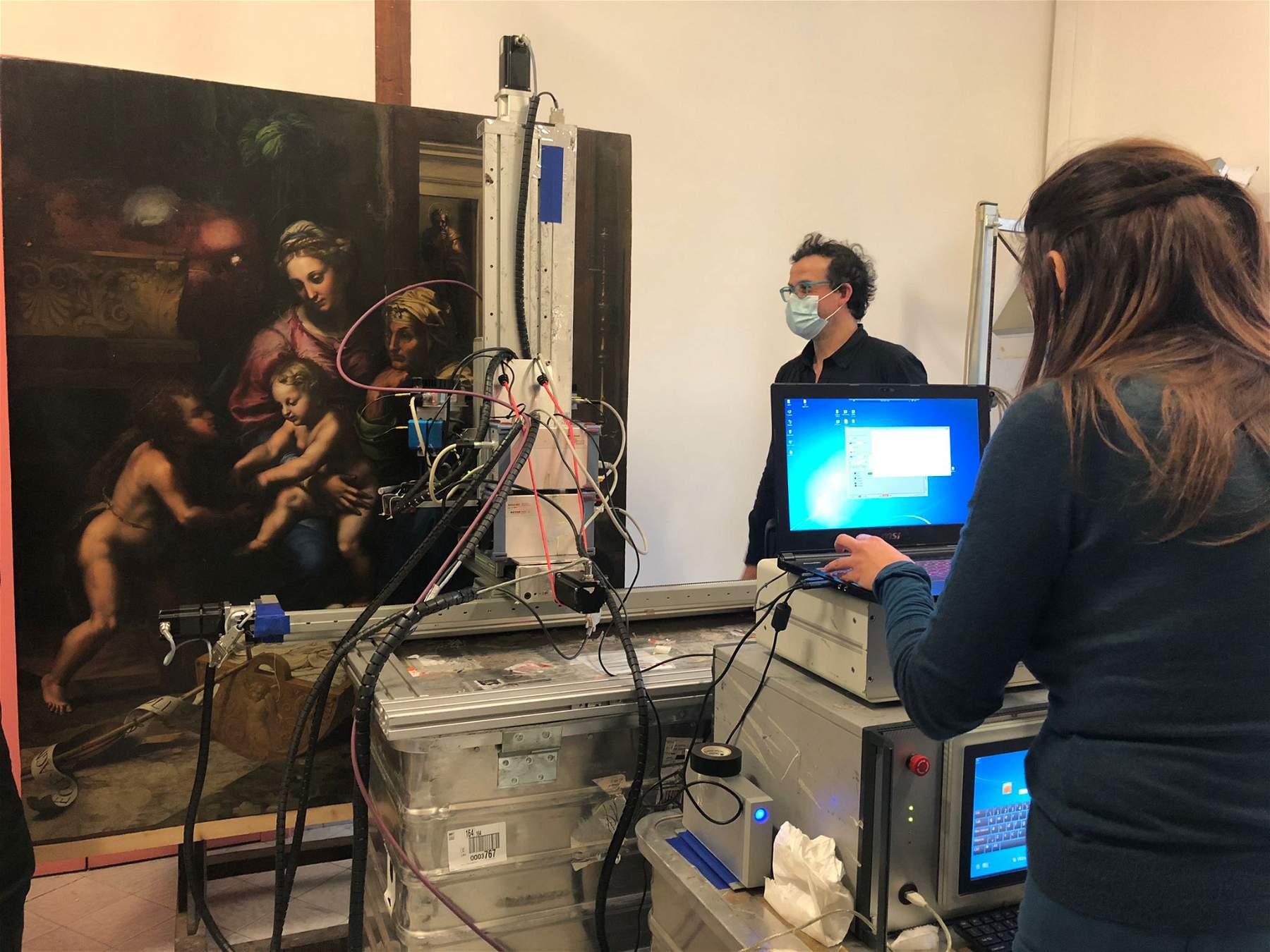A major campaign of diagnostic investigations on paintings by Raphael and his workshop has begun at the Capodimonte Museum and Real Bosco in Naples as part of a scientific collaboration of the museum with CNR ISPC (Institute of Cultural Heritage Sciences), LNS-INFN (National Laboratories of the South) in Catania and CNR-SCITEC (Institute of Chemical Sciences and Technologies). These days in the restoration laboratories and the museum, non-invasive macro X-ray fluorescence (MA-XRF: it is a technique that scans the painting with X-ray beams) scanning and hyperspectral Vis imaging in reflectance and emission are being studied with non-invasive measurements of some paintings: Raphael’sEterno and Piandimeleto’s Evangelist, Raphael’s Portrait of Cardinal Alessandro Farnese, a copy of the Bridgewater Madonna, Giulio Romano’s Madonna of the Cat, and two works derived from Raphael, the Madonna of the Veil and the Madonna of the Passing.
The non-invasive measurement campaign, coordinated by CNR ISPC, is part of a larger collaborative program that includes the Department of Humanities and Cultural Heritage at the University of Campania Vanvitelli and LAMS (Laboratoire d’archéologue moléculaire et structurale) in Paris to study the paintings of Raphael and workshop, the results of which will be presented next June at an international conference and exhibition to be held precisely at the Neapolitan museum.
The exhibition aims to enhance the museum’s Raphael heritage, and to offer the public the novelties that have emerged from the campaign of diagnostic investigations conducted at the institute, which will allow an original approach both to the works of art, seen in their making, and to the work of the artist’s workshop and those of his followers, highlighting the complex work behind the creation of originals, multiples, copies, and derivations.
Indeed, the Museo e Real Bosco di Capodimonte preserves a number of Raphael’s autograph works that make it possible to exemplify the main moments in the artist’s career(St. Nicholas of Tolentino Altarpiece, 1501; Portrait of Alessandro Farnese, c. 1511; Moses and the Burning Bush, 1514; Madonna of Divine Love, 1516-18) and his more immediate sequel(Madonna of the Cat c. 1518-1520?). However, the same museum also preserves a number of copies, derivations, and multiples, some of which may have been elaborated in the artist’s own workshop(Madonna del Passeggio), others by the hands of first-rate artists for important patrons(Andrea del Sarto), or perhaps by exercise (Daniele da Volterra), and others by more mechanical copyists(Bridgewater Madonna), allowing for a wide-ranging exploration of this type of production, which constituted a large part of the work of the workshops of the sixteenth and seventeenth centuries and which today forms a huge, though often overlooked, part of our artistic heritage.
Pictured: analysis of Giulio Romano’s Madonna of the Cat.
 |
| Naples, Capodimonte Museum a campaign to investigate paintings by Raphael and workshop |
Warning: the translation into English of the original Italian article was created using automatic tools. We undertake to review all articles, but we do not guarantee the total absence of inaccuracies in the translation due to the program. You can find the original by clicking on the ITA button. If you find any mistake,please contact us.